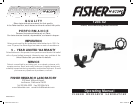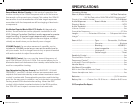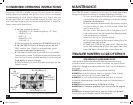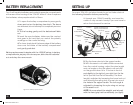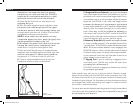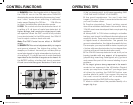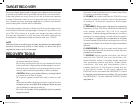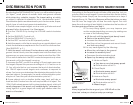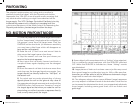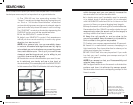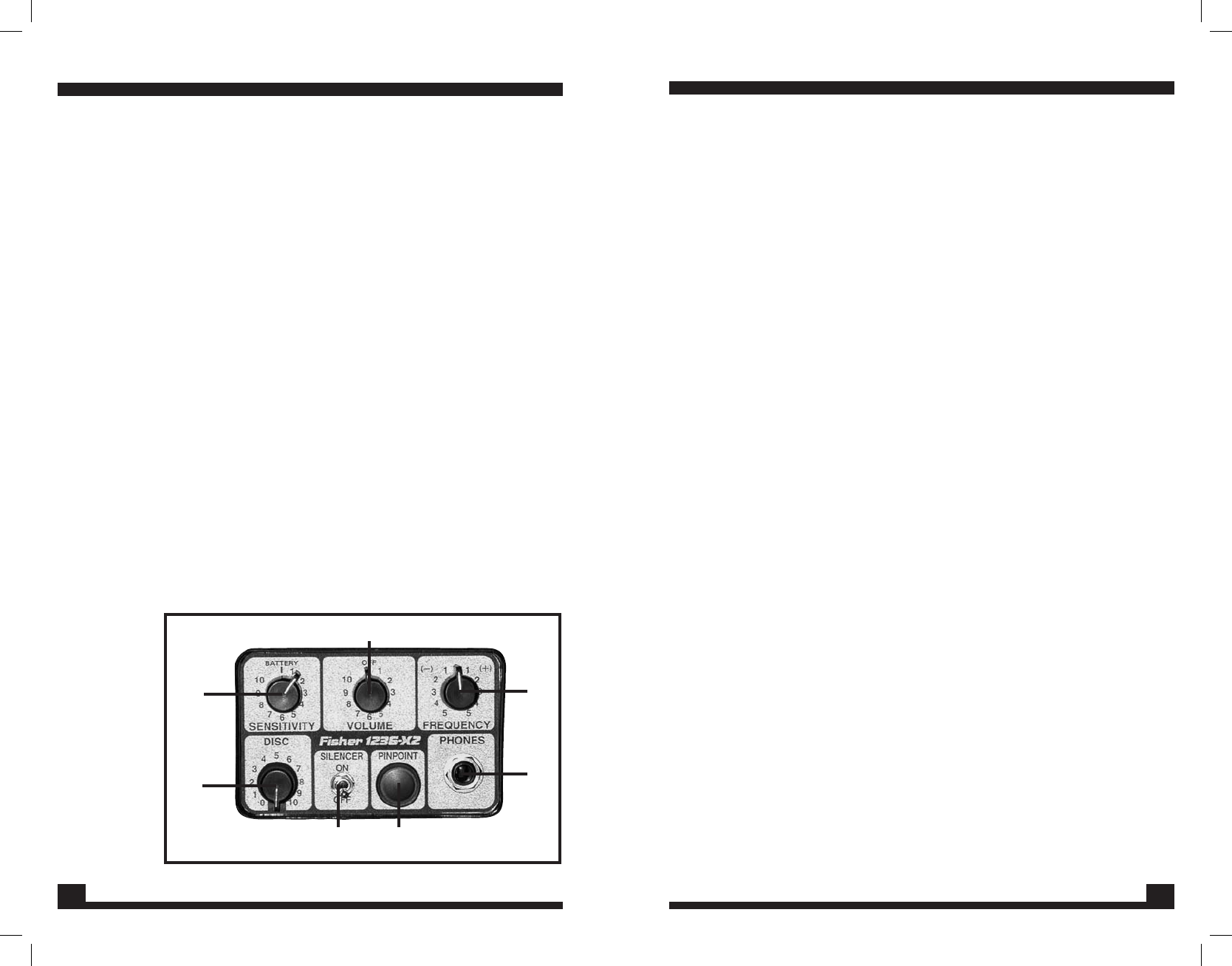
10
CONTROL FUNCTIONS
1. SILENCER: When the toggle switch is ipped ON,
the 1236-X2 runs in the 3rd derivative SILENCER
discrimination mode, eliminating the annoying “pops”
and “clicks” heard when searching in extremely
trashy areas. Flipping it to OFF, the 1236-X2 runs
in classic 2nd derivative discrimination mode.
2. DISC: This control sets the discrimination level. At
a setting of 0, all types of metal are detected. At
higher settings, less conductive objects and trash
are rejected. When the DISC control is fully rotated
(counterclockwise) to the IRON preset, the 1236-X2
is set to reject common trash and nails.
Note: The DISC Control has no effect in PINPOINT
mode.
3. SENSITIVITY: This control adjusts sensitivity to targets
and ground minerals. The higher the setting, the
deeper you’ll detect. However, you will also pick up
more false signals in highly mineralized or trashy soil.
At a setting of 10, a slight amount of audio threshold
is provided so the faintest of targets can be heard. At
the BATTERY setting, a battery test tone is sounded.
A loud tone indicates good batteries. A faint tone
3
2
1 7
6
5
4
Figure 5. Control panel
19
OPERATING TIPS
1. We’ve already said it, but it bears repeating: TAKE
YOUR TIME AND OVERLAP YOUR SWEEPS.
2. Use good headphones. You won’t miss faint
targets, you won’t attract unwanted attention and
you won’t bother others.
3. Practice pinpointing. There’s nothing sacred
about the methods described in this manual. Many
1236-X2 users have developed their own pinpointing
methods.
4. Always BURY A COIN when working in unfamiliar
territory, and check it at different discrimination and
sensitivity levels. There may be some sensitivity loss
at higher levels of discrimination. The greater the
ground mineralization, the higher the sensitivity loss.
For example, you may be able to detect a penny at
6 inches with zero discrimination, but no deeper than
4 inches at the pull-tab discrimination point.
5. The 1236-X2 is an easy detector to use, but if you’re
having trouble with any aspect of its operation
(pinpointing, searching, false signals, etc.) go back
and reread the part of this manual relating to your
problem.
6. If a target gives a strong response in the search
mode but no response in the NO-Motion Pinpoint
mode, you may have “tuned out” your target (and
all others) by pushing the PINPOINT button over
another piece of metal. If you suspect this may be
the case, move the search coil to another spot
before pressing the PINPOINT button again.
7. When in doubt about the possible identity of a
target, dig it up.
1236x2 manual-8704810.indd 10 6/9/06 10:08:58 AM



